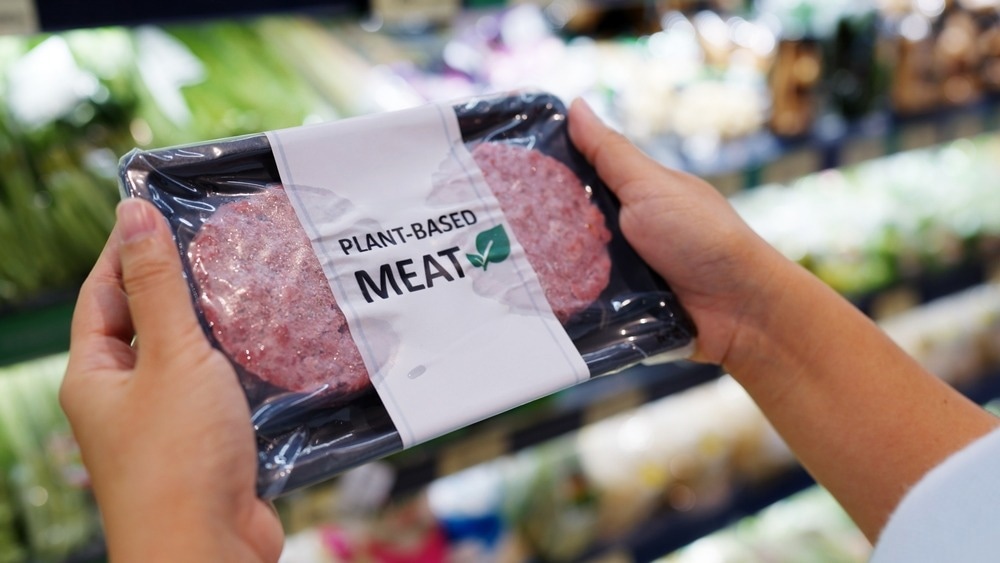In a recent study published in the Nutrients Journal, researchers estimated the nutritional implications of replacing ‘easily swappable’ animal-origin dairy milk and meat with visibly and functionally similar plant-origin foods among Australians.

Study: Impact of a Switch to Plant-Based Foods That Visually and Functionally Mimic Animal-Source Meat and Dairy Milk for the Australian Population—A Dietary Modelling Study. Image Credit: Chay_Tee/Shutterstock.com
Background
The Intergovernmental Panel on Climate Change (IPCC) has stated that limiting the consumption of animal-based foods such as dairy and meat and increasing the intake of plant-sourced foods could aid in protecting the environment.
Accordingly, government policies have been laid down to increase dietary transitions to plant-based foods. However, the documented nutrient composition of plant-based versions of animal-origin foods is mainly based on food packaging details.
Thus, data on the true nutritional content, particularly the micronutrient composition and micronutrients, are limited.
About the study
In the present microsimulation dietary modeling study, researchers evaluated the nutritional impact of switching to plant-origin food simulations of animal-origin meat and dairy products in Australia.
Computer-simulated models were fitted with dietary microdata obtained from the national nutrition and physical activity survey (NNPAS), a part of the Australian health survey conducted from May 2011 to June 2012.
The team modeled accelerated and conservative dietary substitution scenarios, replacing animal-origin meat and dairy milk with their plant-origin counterparts, based on the 2030 estimated mean yearly intake of plant-origin ‘meat’ from two Deloitte Access Economics forecasts.
As a secondary analysis, the team explored the estimated nutritional effects of dietary transitions by age, including subgroups of young pediatric individuals (two to three years), young males (19.0 to 30.0 years), young females (19.0 to 30.0 years) and older adult individuals (≥71.0 years).
The dietary analogs were identified using the eight-digit food codes. The animal-origin meat swap included mince, fillet, beef steak, various chicken parts-mainly wings, breast, thighs, fillets, drumsticks, and pork/beef/chicken sausages, and the dairy milk swap included cow milk.
For the NNPAS study, dietary consumption was evaluated utilizing de-identified 24-hour diet recalls, weighed against participants’ age, sex, and residence, and data, which were obtained from randomly chosen 12,153 Australians aged two to 90.0 years representing the nation.
The mean dietary consumption of every food item was derived for the base case populations by linkage of food codes (and mean quantity of dietary intake) to the respective national food intake nutrient profiles listed in the AUSNUT 2011-2013 database.
In the dietary replacement scenarios, foods were substituted, followed by a calculation of the mean percent difference in the consumption of key nutrients between the base case (2011 to 2012 consumption) and the computer-modeled scenarios.
Nutrients for which the ‘easily swappable animal-origin meat and dairy milk’ supplied ≥5.0% of the mean total dietary consumption for Australians aged ≥two years were considered key nutrients.
Results
The findings indicated that the extensive intake of plant-origin ‘milk’ and ‘meat’ instead of animal-sourced originals could negatively affect the consumption of a few nutrients among Australians. Particularly cyanocobalamin (vitamin B12), iodine, zinc, and omega-3 fatty acids.
Minor changes were observed in the estimated dietary intake in the conservative milk and meat scenarios. However, combining the accelerated scenarios showed that the theoretical sodium and iron intake increased markedly (by 7.0% and 15.0%, respectively), whereas that of iodine and cyanocobalamin reduced by 14.0% and 19.0%, respectively.
In addition, the consumption of zinc, phosphorus, niacin, riboflavin, and omega-3 fatty acids was decreased by 6.0 to 8.0%.
Considering the 2011-2012 NNPAS study findings, the dietary consumption might be concerning due to computer-modeled decreases in nutritional intake, probably aggravating the existing dietary insufficiency.
Examples include iodine intake among women, especially young females, cyanocobalamin among women, omega-3 fatty acids among adults, riboflavin among older adult individuals, vitamin A and zinc among young males, vitamin B6 among young females, selenium and calcium among older adult individuals, and protein and zinc among older males.
The accelerated-type meat intake scenario showed a 6.0% to 7.0% theoretically lower consumption of niacin, cyanocobalamin, and omega-3 fatty acids, whereas 6% and 12% higher consumption of sodium and iron, respectively.
Contrastingly, the accelerated-type milk intake scenario theoretically lowered the consumption of cyanocobalamin and iodine (by 12% and 17%, respectively) and that of phosphorus, calcium, and riboflavin by 5.0%.
There was a noteworthy (14%) estimated decrease in iodine intake among Australians, who were previously categorized as having a mild deficiency by the World Health Organization (WHO).
The estimated extent of reduction of cyanocobalamin consumption, related to the accelerated scenarios, of 31% and 16% to 19% among young children and adults, respectively, in comparison to the 2011-2012 period mean dietary consumption, is of concern.
The findings are concerning, especially for older adult individuals, due to their lower cyanocobalamin absorption ability, and for female individuals aged ≥14 years (since 5.0% to 8.0%% were documented to have insufficient intake in 2011-2012.
With a predicted 80.0% of adult Australians consuming omega-3 fatty acids inadequately in 2011-2012, the estimated 6% to 10% decrease in consumption in the accelerated meat scenario would likely result in adverse health outcomes.
Moreover, the zinc intake might be especially concerning among men if animal-origin food intake is lowered since 33% of Australian men and 67% of older males have been documented to consume insufficient amounts in 2011-12, and the accelerated scenario estimated a 6.0 to 8.0% decrease in the intake.
Conclusion
Based on the study findings, the estimated nutritional impact of replacing ‘like-for-like’ animal-origin milk and meat with plant-origin imitation products may elevate the risk of nutritional insufficiency among Australians, particularly of cyanocobalamin and iodine (for women), zinc (for men) and omega-3 fatty acids (for adult individuals), in the accelerated scenario.